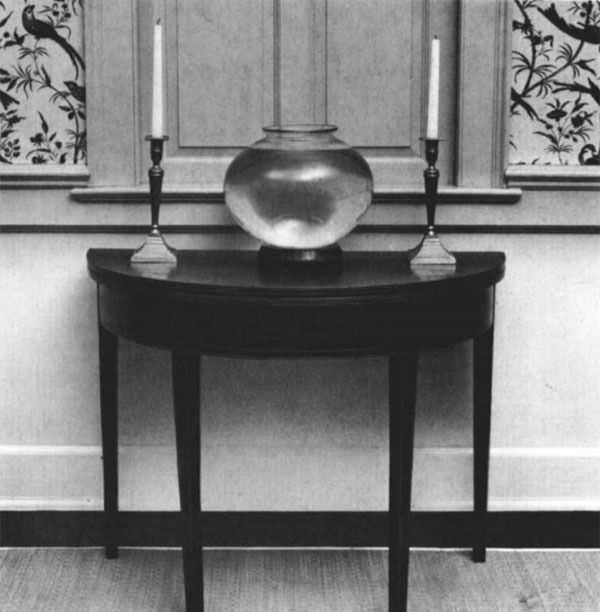How To Build a Federal Card Table
String inlay frames the game
Synopsis: Michael Dunbar says that Americans were fascinated with card playing during the Federal Period. A special piece of furniture – the round card table with one hinged leaf that closed book fashion – was created for this purpose. Dunbar says the table is not a particularly complex project, in spite of the inlaid stringing. The skirt is made with bricklaid stock, and the left leg swings, gate-style, when the table is opened. Detailed project plans accompany the step-by-step directions on building and inlaying the table. A side article by David Ray Pine explains shop-made inlay.
At no other time in our history were Americans more fascinated with card playing than during the Federal period. So much time was devoted to cards that a special piece of furniture—the round card table with one hinged leaf that closed book-fashion—was created for just this purpose.
Often called demi-lunes, these tables were made from the early-18th century until the mid-19th century, but the form was never as popular as it was during the Federal period. A household that did not own at least one card table was as unusual as a modern household without a television. Card tables were often A card table was often the most elaborate piece of furniture in the Federal-period home. The left rear leg swings out to support the hinged top, which opens up book fashion. the most elaborate pieces of furniture a family owned. When not in use, these tables were prominently displayed in the front hallway or the formal parlor.
This particular table has a visual intensity created by the string inlay, or stringing, on every visible surface except the top and the insides of the legs. Stringing was commonly used in formal Federal furniture, perhaps because cabinetmakers appreciated its ability to draw the viewer’s eye—particularly when illuminated by candelight. On this table, which is primarily mahogany, the light-colored inlay acts as a visual fence, bounding each area and preventing the eye from moving easily from one to the other. For a brief moment, the viewer’s attention is trapped inside each area, scans the perimeter several times, then moves on to the next surface where it is again briefly seized and spun around the outline of the stringing.
Each time I view this table, my eye is drawn first to the skirt. There it moves quickly around the long rectangle, like a marble spinning inside a tin can. The concave corners enable my eye to jump from a horizontal line to a vertical to the other horizontal. On less well-thoughtout tables, where the corners of the stringing are square, the eye will follow the horizontal lines into the corners and the quick scanning motion is subverted, The effect is like trying to spin a marble in a box instead of a can.
From Fine Woodworking #59
For the full article, download the PDF below:
Fine Woodworking Recommended Products

Compass

Drafting Tools

Stanley Powerlock 16-ft. tape measure






















Comments
Some of the text is missing from the pdf
What text is missing?
Log in or create an account to post a comment.
Sign up Log in